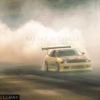R33 Gtst Fuel Tank Capacity?
Announcements
-
Similar Content
-
Latest Posts
-
A quick google, and some E39 users have found pulling my sensor out/apart and cleaning it alleviates their issue. Then get the oil warning to go off, and once it is off (from the sensor saying it was unhappy) some find they can just unplug it and it is happy to just keep going now. Maybe give it a crack? If you can actually pull the sensor apart, hit it with some electrical contact cleaner.
-
Yep. In the E39 it's slightly different than the others. Honestly I'd just leave it but every time I drive the car it tells me oil is low and that just makes me check the dipstick. It is a BMW Afterall and it tries to expel it's own oil regularly. Thankfully it's not like my E90 that has no dipstick at all so you just gotta trust it.
-
Was that also a typo? $350?! Just typing "BMW oil level sensor" and prices start out a lot more sanely than $350. I'm guessing it's a sensor used in one low volume model only or something?
-
They kept the product number the same, so we "didn't pick it up when packing your order". If you packed the order, you clearly saw the box wasn't Hella...






Recommended Posts
Create an account or sign in to comment
You need to be a member in order to leave a comment
Create an account
Sign up for a new account in our community. It's easy!
Register a new accountSign in
Already have an account? Sign in here.
Sign In Now